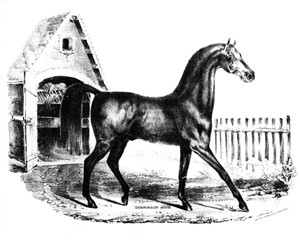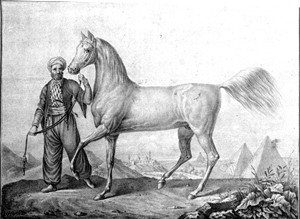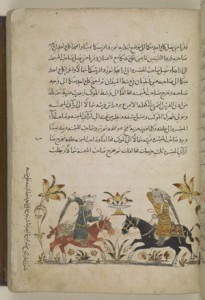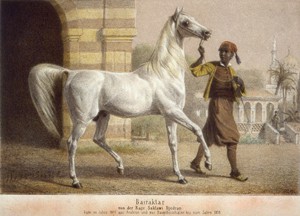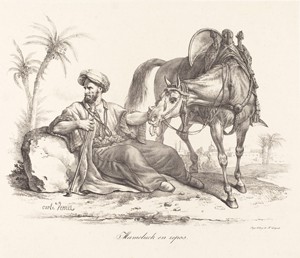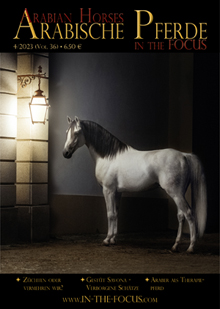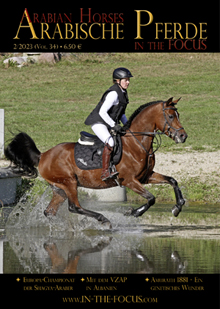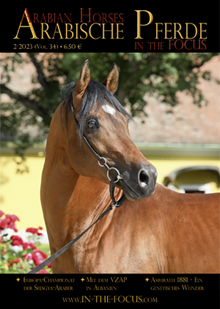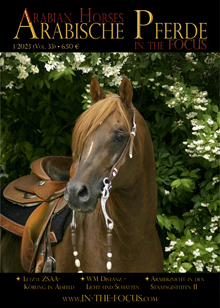Until the beginning of the 19th century, Arabian horses were rather rare in European stables, and more often than not, they actually were Oriental horses or originating from the fringes of the Arabian Peninsula, e.g. from Persia, Turkey or maybe even South Russia or Turkestan. Apart from that, the various authors had different definitions about …
Geschichte
Oct 14 2015
The Horse of the Mamluk Sheikh – Tajar “Hunyady”
The fleabitten grey Tajar (the Flying, the Fast in Arabic) was one of the most important Arabian stallions imported at the beginning of the 19th century to Hungary, for which reason the Hungarian Arabian Horse Breeders Association has chosen this stallion as its emblem. The fleabitten grey Tajar (the Flying, the Fast in Arabic) was …
Apr 07 2015
Furusiyah – Die Reitkunst der Mamelucken
Ein Manuskript zur Reitkunst der Mamelucken aus dem 14. Jahrhundert ist in der Qatar Digital Library verfügbar. Achtzehn Zeichnungen illustrieren die Waffen, die von den Reitern benutzt wurden, wie beispielswesie der Bogen, das Schwert und die Lanze. Die Handschrift beschäftigt sich auch mit der Zusammenführung von Truppen und die Bildung von Kampflinien, sowie mit der …
Mar 26 2015
Bairaktar – first underestimated, then admired
Bairaktar was the crown of the stud, an eminent animal, whose offspring stand unrivaled. The King used him for some time as riding horse, while there was no evidence yet about his prepotency; when he also convinced in this respect, he was used as sire and remained in this position as long as his strength …
Mar 15 2015
Beduinen-Traditionen und ihre Bedeutung heute
An der WAHO Konferenz 2014 in Doha, Qatar, hielt Cynthia Culbertson einen Vortrag über Beduinen-Traditionen und Pferdezucht. Sie untersuchte, wie die Beduinen ihre Pferde behandelt und versorgt haben, nachgewiesen durch Textzitate in vorislamischen Gedichten. Die Autorin verweist auf die Beduinen-Tradition, ein arabisches Pferd nicht durch Schläge sondern nur durch Gesten und Worte zu trainieren und …
- 1
- 2






